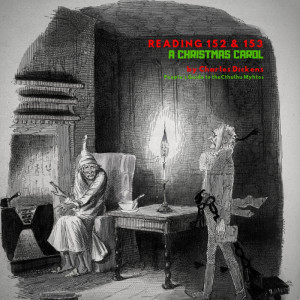
A Christmas Carol. In Prose. Being a Ghost Story of Christmas, commonly known as A Christmas Carol, is a novella by Charles Dickens, first published in London by Chapman & Hall in 1843 and illustrated by John Leech. A Christmas Carol recounts the story of Ebenezer Scrooge, an elderly miser who is visited by the ghost of his former business partner Jacob Marley and the spirits of Christmas Past, Present and Yet to Come. After their visits, Scrooge is transformed into a kinder, gentler man.
Dickens wrote A Christmas Carol during a period when the British were exploring and re-evaluating past Christmas traditions, including carols and newer customs such as Christmas trees. He was influenced by the experiences of his own youth and by the Christmas stories of other authors including Washington Irving and Douglas Jerrold. Dickens had written three Christmas stories prior to the novella, and was inspired following a visit to the Field Lane Ragged School, one of several establishments for London's street children. The treatment of the poor and the ability of a selfish man to redeem himself by transforming into a more sympathetic character are the key themes of the story. There is discussion among academics as to whether this was a fully secular story, or if it is a Christian allegory.
Published on 19 December, the first edition sold out by Christmas Eve; by the end of 1844 thirteen editions had been released. Most critics reviewed the novella favourably. The story was illicitly copied in January 1844; Dickens took legal action against the publishers, who went bankrupt, further reducing Dickens's small profits from the publication. He went on to write four other Christmas stories in subsequent years. In 1849 he began public readings of the story which proved so successful he undertook 127 further performances until 1870, the year of his death. A Christmas Carol has never been out of print and has been translated into several languages; the story has been adapted many times for film, stage, opera and other media.
A Christmas Carol captured the zeitgeist of the mid-Victorian revival of the Christmas holiday. Dickens had acknowledged the influence of the modern Western observance of Christmas and later inspired several aspects of Christmas, including family gatherings, seasonal food and drink, dancing, games and a festive generosity of spirit.
This episode is brought to you by Found Item Clothing dot com and bunny slippers dot com
Subscribe to PGttCM with DB Spitzer and Sara Fee wherever you subscribe to podcasts, we use podbean and applepodcasts
Check out our new website over at WWW.PGttCM.com!
Check out new PGttCM merch over at PGttCM.threadless.com
Follow on twitter, facebook, and instagram at PGttCM
and youtube at “People’s Guide to the Cthulhu Mythos”
Written and Edited by Daniel Spitzer
Audio by Sara Fee and Daniel Spitzer
Music by Kevin McLeod
The Chamber, Oppressive Gloom, The Sky of our Ancestors
Help the show by sharing/rating/liking or 5 star giving wherever you listen to or rate podcasts
Buy a cool shirt from pgttcm.threadless.com.
PGTTCM is part of the dark myths collective.
Learn more at Dark Myths.ORG
Decline,
The Chamber
Music by Kevin MacLeod (incompetech.com)
Licensed under Creative Commons: By Attribution 3.0 License
http://creativecommons.org/licenses/by/3.0/
Help support the show by going to PayPal.me/pgttcm and donate a buck or 5, or pgttcm.podbean.com and become a patron.
Comments (0)
To leave or reply to comments, please download free Podbean or
No Comments
To leave or reply to comments,
please download free Podbean App.